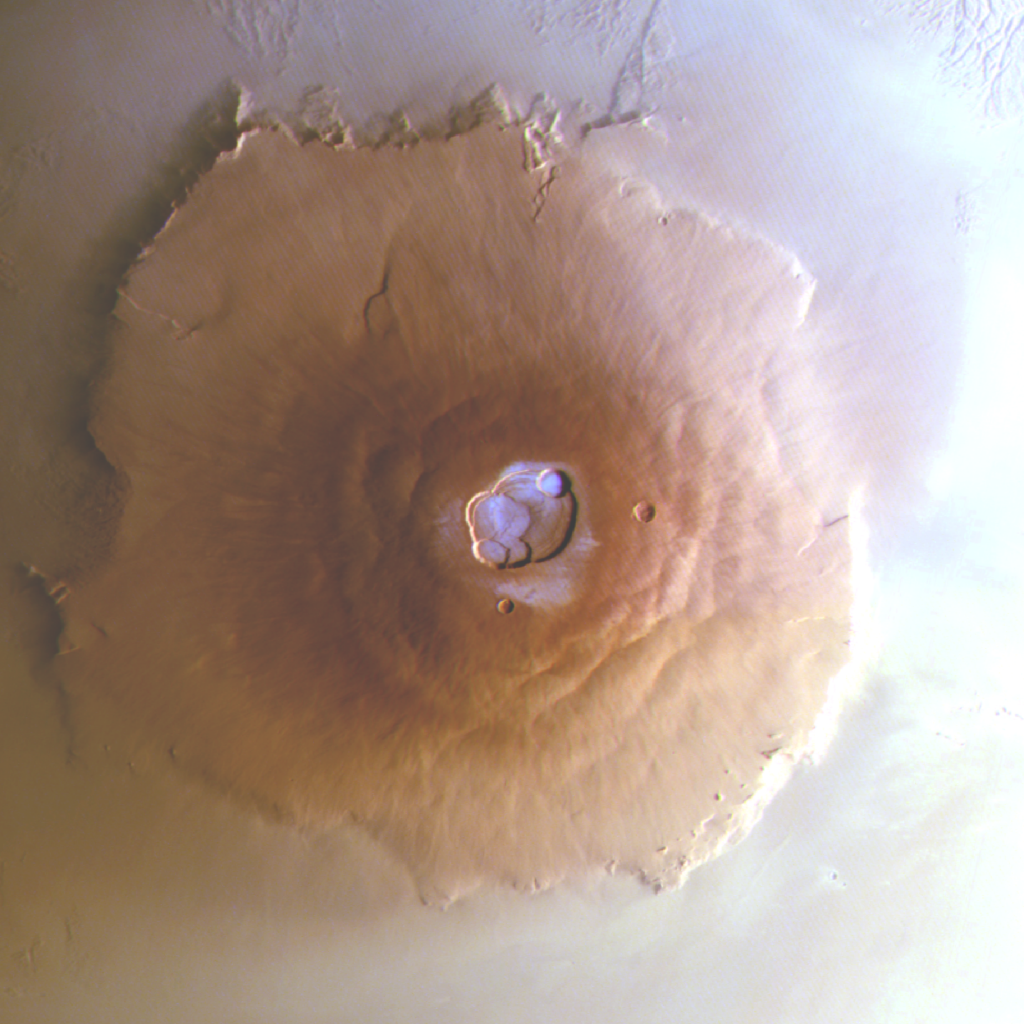First evidence of water frost on the tallest volcanoes of Mars
Brussels, 10 June 2024 – A new study reveals for the first time the presence of water frost on the peak of Martian volcanoes near the equator. This discovery was published in a recent Nature Geoscience paper, with contributions from researchers of the Royal Observatory of Belgium (ROB) and the Royal Belgian Institute for Space Aeronomy (BIRA-IASB).
The presence of frost was observed independently by the Colour and Stereo Surface Imaging System (CaSSIS) and the Nadir and Occultation for Mars Discovery (NOMAD) instruments onboard the European Space Agency’s (ESA) ExoMars Trace Gas Orbiter (TGO) spacecraft, as well as by the High Resolution Stereo Camera (HRSC) from ESA’s Mars Express mission. Scientists from ROB analysed data from the TGO-NOMAD instrument. NOMAD, led by BIRA-IASB, consists of three distinct spectrometers that observe the Martian atmosphere and surface across various wavelengths and in different observation modes. Specifically, the Limb Nadir and Occultation (LNO) spectrometer of NOMAD, originally designed to measure absorptions by the Mars atmosphere of infrared sunlight reflected from the surface, detected an absorption by ice deposits at the summit of Olympus Mons, located at an altitude of 20 km above the surrounding area.
The weather conditions at these high altitudes were simulated by the researchers at ROB in order to assess spacecraft observations within a consistent theoretical framework and to better identify the frost composition. Modelling of Martian air circulation at the summit of the caldera, the large depression at the peak of ancient volcanoes, revealed that moist air can indeed condense into water frost at the bottom of the caldera floor during the night and early morning, similar to what can be observed on the Earth.
This discovery provides new insights into Martian climate dynamics, highlighting the importance of ongoing research to understand the Martian water cycle and prepare for future Mars missions and possible human exploration.

This early morning wide-angle image of Olympus Mons (LST = 7:20 a.m., Ls = 346.7°, lat = 18.2°N, lon = -133.2°E) taken by the Mars Express High Resolution Stereo Camera (MEX-HRSC) reveals for the first time the presence of frost on the summit of the volcano, the tallest one on Mars and in the entire Solar System. © ESA/DLR/FU Berlin
More information:
- Reference paper: Valantinas et al., Evidence for transient morning water frost deposits on the Tharsis volcanoes of Mars, Nature Geosciences, published online on 10 June 2024, https://doi.org/10.1038/s41561-024-01457-7.
- ESA press release: https://www.esa.int/Science_Exploration/Space_Science/Mars_Express/Frosty_volcanoes_discovered_in_Mars_s_tropics/
- TGO-NOMAD website: https://nomad.aeronomie.be/index.php

